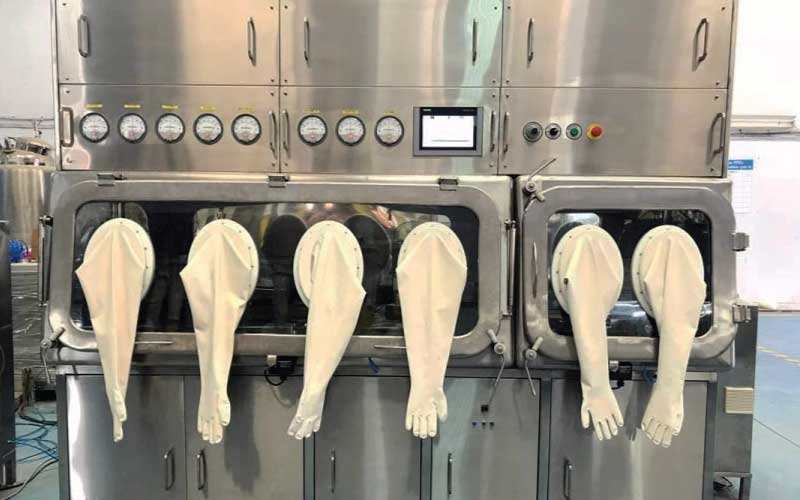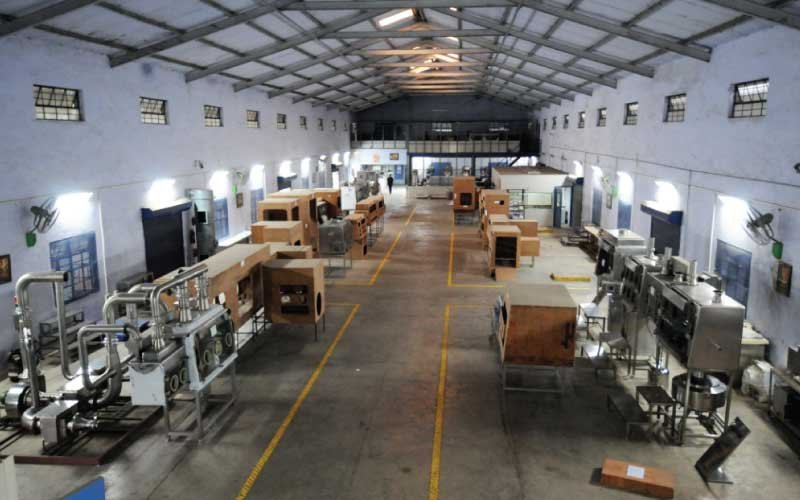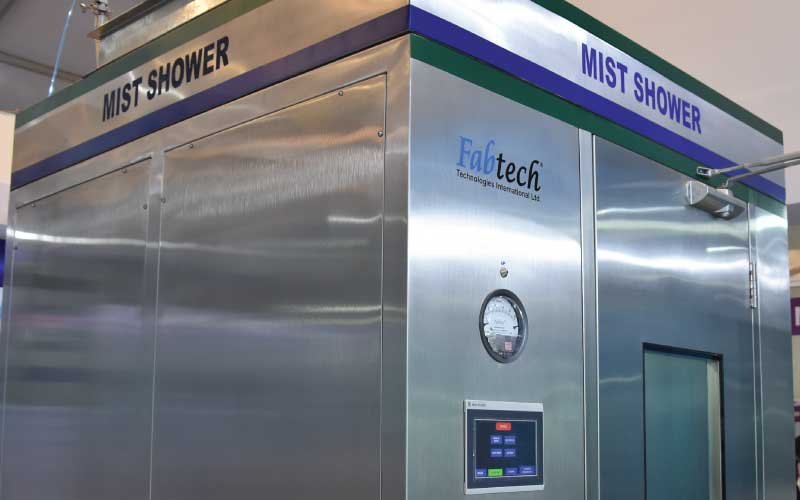Cleanrooms 101

The market for cleanrooms in the life sciences industry has been growing steadily partly due to an increased demand for sterile biologic drugs. At the same time, cleanroom technology, by necessity, requires constant innovation to address the burgeoning need for new solutions that meet the increasingly stringent regulatory requirements and ever-high performance expectations from the industry.
In this post, we provide a primer on cleanrooms as well as the equipment typically used in cleanroom applications.
What is a cleanroom?
A cleanroom is a specially designed or constructed room with a controlled environment to ensure a low level of pollutants such as dust, airborne microbes, aerosol particles and chemical vapours. It has a controlled level of contamination specified by the number of particles per cubic metre at specified particle size (Particles are small, discrete mass of solid or liquid matter usually measured in microns). Everything from the air supply and distribution, the filtration of air supply, materials of construction and operating procedures as well as environmental parameters such as temperature, humidity and pressure are regulated to control airborne particle concentrations. Cleanrooms are classified in accordance with ISO standards. ISO 9 which is the lowest standard of cleanroom construction corresponds to the ambient air in a typical city environment with 35,000,000 particles per cubic metre, 0.5 microns and larger in diameter.
HEPA & ULPA Filters
The key component in cleanrooms is the HEPA (High-Efficiency Particulate Air) filter which is a critical part of the air filtration system. It is rated for 0.3-micron particles with varying efficiencies and is used to trap and isolate particles that are 0.3 microns or larger. All the air that is delivered to a cleanroom passes through these HEPA filters. ULPA (Ultra Low Particulate Air) filters are used when stringent standards of cleanliness and performance are mandated.
Cleanroom Personnel
While contaminants can enter a cleanroom via equipment, material or processes the most significant single controllable source of cleanroom contamination is personnel who work within the cleanroom facility.
Personnel who work in cleanrooms are trained in the aspects of contamination control. Depending on the application they are required to enter and exit the cleanroom through airlocks that may be or may not be connected to contamination control systems like air or mist showers so they can be decontaminated upon entry and exit.
Air & Mist Showers
Air showers deliver a high-velocity stream that detached particles from a user’s garments while Mist Showers deliver a finely atomised fog to temporarily bind loose powders to the user’s garment and prevent them from becoming airborne or migrating outside the containment area during de-gowning. These contamination control systems also provide essential protection to the operator’s respiratory system, protecting them from inhalation hazards during de-gowning.
Modular in design, these systems can be integrated with exit airlock systems or emergency exit in a processing facility where highly potent molecules are manufactured/used as raw materials. When the operator removes their protective clothing (PPE), they also take off the primary personal protection (respirator) at the same time.
Clothing in Cleanrooms
Cleanroom clothing varies from lab coats and hair coverings to layered safe suits with self-contained breathing apparatus depending on the level of hazard to the person from material being processed in the facility. Cleanroom clothing is also used to trap substances like hair, and dead skin generated by the skin and body that can contaminate the environment. The garment itself must not release any particles or fibres. Personnel contamination can degrade product performance in the pharmaceutical and medical device industry and result in cross-contamination between hospital staff and patients in the healthcare industry.
Cleanroom garments include booties, smocks, aprons, face masks, caps, coveralls, lab coats, gloves, sleeves and shoe covers and reflect the cleanroom and product specifications. Low-level cleanrooms may only require special shoes with smooth soles that do not track in dust or dirt. Class 10,000 cleanrooms may use smocks, caps, and booties. Class 10 cleanrooms, on the other hand, mandate careful gown wearing procedures with coveralls, boots, gloves and enclosed respirators.
De-dusting Tunnels

One method to reduce incoming contamination into the facility via raw material containers, canisters, sacks and bags is to prevent the infiltration of dust at the point of entry with Fabtech’s De-dusting Tunnels. De-Dusting Tunnels are used to remove loose particles and dust that accumulates on raw material containers even before they are brought into the warehouse.
They are a single pass fully automated system with sliding doors at entrance and exit. Containers are subjected to high-velocity air while they are moved through an endless conveyor and through combinations of rotary moving brushes in X and Y axes which scrub and detach non-viable particles from the container. Loose particles are collected in a tray while airborne particles are retained in a series of filters offering a significant reduction in dust levels, ensuring product quality and improved yield.
De-dusting tunnels are increasingly becoming a part of the standard cleanroom project design layout. Fabtech’s tunnels are easy to maintain, reliable, automated and GMP compliant and deliver consistent performance over manual cleaning.
Laminar Air flow Systems
Cleanrooms maintain particulate-free air through HEPA or ULPA filters employing laminar or turbulent airflow principles. Laminar or unidirectional air flow systems direct filtered air downward in a constant stream. Laminar air flow systems are typically employed across the full ceiling to maintain consistent, unidirectional flow. Laminar flow criteria are utilised in portable workstations (LF hoods) and mandated in ISO-1 through ISO-4 classified cleanrooms.
Accurate cleanroom design includes the entire air distribution system, with provisions for adequate, downstream air returns. In vertical flow rooms, this means the use of low wall air returns around the perimeter of the zone. In horizontal flow applications, it requires the use of air returns at the downstream boundary of the process.
The demand for cleanroom equipment customisation by way of design, dimensions and accessories has been rapidly rising over the last few years. There is an increased focus on efficiency, energy savings, sustainability and equipment functionality with equipment that allows for maximisation of usable space being in great demand. Flush and smooth component transitions and coved surfaces are the order of the day.
Cleanroom Panels
Fabtech offers profile panels featuring standard widths as well as custom dimensions per room size. Panels are installed on a box base runner, so the epoxy coving is flush to the panel. The base tracer ensures no damage during renovations. Floor levels can be adjusted with packing slits in the base track.
The material of construction can be galvanized iron or stainless steel in pre-painted or powder coated variations resulting in a non-corrosive environment even with a weekly chemical wash. A big advantage of powder coated panels is that all cut-outs for lights, HEPA boxes, switches, risers, diffusers are carried on CNC machines at the factory and channels are welded on before powder-coating. The panel is stronger without any exposure of the infill for a better final finish. Powder coating also protects against peel off, offers better scratch resistance, chemical resistance and control of gloss level and accessory colours for better aesthetics.
The panels are interconnected with aluminium profiles making for sturdy assembly and a robust cleanroom structure. Disassembly or replacement of a single panel can be carried out without disturbing other panels and rooms can be resized as needed. Profiles are concealed to avoid leaks. Wires and conduits can be passed from within the panel.
Inline doors and view panels conform to EU-GMP standards and allow for maximised door width and height. There is a lower wastage as a result of customisation. Infill insulation material options include Mineral wool, PUF and PIR. We recommend mineral wool as it is approved by global regulatory bodies and offers higher fire resistance up to 500-deg C and better fire control mechanism for up to 120 minutes.
One big challenge with cleanroom setups is that conventional cleanroom partitions limit future design changes to the structure of the original floor plans. To modify room sizes involves dismantling ceilings, breaking floorings and is tedious and time-consuming. Dismantled panels occupy prime storage space and there is also the risk of damaging the epoxy in the panels itself.
MOVFLO

MOVFLO or Movable, Sound-insulating Partitioning Systems is a revolutionary panel innovated by Fabtech that combines opaque elements with a glass version, allowing for transparent elements inside the panels. These panels are easy to move or fold, drastically simplifying modifications, movement of walls and machinery. They are interchangeable and built with an aluminium anodised track and 360-degree adjustable roller to ensure each panel can be held and moved with total ease and minimum effort. Dismantling time is reduced by up to 70% with savings on engineers, labour and material with every modification.
Containment Solutions (Isolators)

Another major development in cleanroom technology is containment solutions (isolator technology). Prevention of cross-contamination with HPAPI (highly potent active pharmaceutical ingredients) is crucial to safe manufacturing processes. Inadequate containment can put employees and the environment at increased risk. An isolator provides a physical barrier between personnel and the work process. There must be a seamless integration of mechanical, electrical and control systems of process equipment and the containment system when highly potent pharmaceutical products are being manufactured.
Isolator technology enables companies to maintain the required cleanliness class and conditions in a limited area rather than the complete manufacturing facility ensuring a significant reduction in HVAC equipment and running costs.
When potent drugs were first developed, the pharma and biotech industry had to develop contained work practices to protect operators and the environment, in turn requiring isolator manufacturers to develop solutions and develop methodologies to validate them.
Validation of Containment Systems
At Fabtech, containment systems are validated in accordance with SAT protocols for containment capability and ability to provide desired levels of cleanliness inside the workspace after the installation. There are no stipulated guidelines of recommendations which makes validating containment systems a much more complicated exercise. We use practices recommended by IEST, ISO standards and guidelines by ISPE and mutually agree on the protocol for validation with our customers in advance.
Innovations in Cleanroom technology
A number of small and big innovations have taken place in cleanroom technology that pharmaceutical and biotech companies can take advantage of to get the most out of their cleanroom equipment.
EC Technology
The definitive advantages of fans and motors with EC technology as compared to conventional asynchronous motors lies in their significantly higher efficiency of up to 90% as opposed to 20-70% with AC motors. This ensures a better use of primary energy, less heat and longer service life. With EC technology you can save up to 30% energy on average. EC technology is a unique, future proof technology that can be monitored centrally via a Building Management System ensuring no outside manipulations and errors. It has minimal noise emissions and can be used anywhere in the world due to a wide voltage input range. It is designed for velocities between 0 – 1600 cfm, but usage scales up or down depending on the requirement. This is particularly relevant when filters get old and more velocity is needed to increase the lifespan of the HEPA filter.
PLCs & HMIs used in custom Cleanroom Equipment
Integrating a Human Machine Interface (HMI) and programmable logic controller (PLC) provides a lean automation solution for cleanroom equipment. A proven, powerful method to boost efficiencies in production processes, it increases productivity, reliability and efficiency. Combining visualisation and control means reduces machine electrical construction costs by eliminating components and wiring. It also minimises after-sales support costs and improves operations by centralising remote access and administration
Gel Materials in HEPA Filters
The use of gel to seal HEPA filters to housings holding frames and grids is becoming increasingly popular. Gel materials are soft, making them the optimal choice to seal filter installations easily. They require lower clamping pressure as compared to typical foam gasket systems.
Online Sampling Booths

Online sampling booths are a game-changing application where the material is weighed and loaded directly onto the de-dusting tunnel and from there passed online directly into the sampling booth. Sampled materials are sent onward into the production area. Online sampling is a preferred next-gen methodology in parental and solid oral manufacturing.
Sampling systems are designed to provide a Class 100 working environment at rest with a built-in scavenging system to ensure protection to the product, operator and the immediate environment. Centralised control operations ensure all material passing through the system can be weighed, and precise readings of the sample and material data documented and available as needed.
From Start to Finish and everything in between (complete turnkey solutions)
A complete understanding of regulatory requirements for cleanrooms and HVAC systems is an absolute prerequisite for anything aspects related to design, qualification and operation of clean rooms. Awareness of all restrictions and relations between material and personnel flows is an essential component of the design of the structure. It is the starting point for concept design and also required airlocks. The cleanroom itself is made up of floor, wall and ceiling systems suitable to the intended application, but it is also essential to understand even the finer points. For example, which systems are suitable for which clean zones or processor, or how isolators are to be integrated into the concept design.
Cleanrooms have to be classified and qualified after the completion of construction. Formal requirements for qualification are the same for both sterile and non-sterile dosage forms with only the contents to be examined and fulfilled being different. Qualification is a verification of the correct functioning of the production rooms which eventually streamlines into routine monitoring. Systems also need to be put into place for requalification, change control, deviation and maintenance to ensure the GMP status is maintained.
Fabtech has been a pioneer in cleanroom infra (modular) and systems. Over the last decade, we have expanded our footprint in air sterilisation equipment and containment solutions. Our solutions are designed to get you up and running in the shortest time from design to commissioning. All our cleanroom solutions are customised to specific requirements and manufactured to meet the stringent approval standards of global regulatory authorities including USFDA, MHRA and TGA.
From design to manufacturing, with in-house engineers to local execution teams and 30,000 sqm factory space, we are able to exert greater control over quality and product. The ultimate benefit is that there is no need for coordination between multiple teams. We are uniquely qualified to solve your manufacturing challenges not just for air, but also for water and process applications.

If you would like more information about our cleanroom infra and equipment solutions, please fill out the form below. We would be happy to help you deliver your next project.
Categories
Recent Posts
Subscribe
Never miss a post from Fabtech. Sign up to receive updates direct to your inbox.

